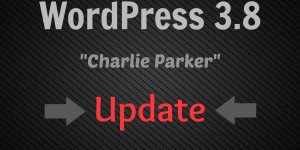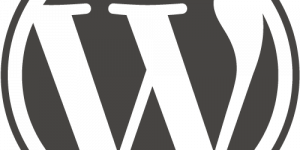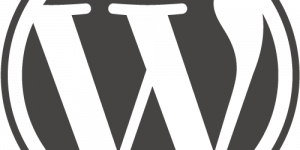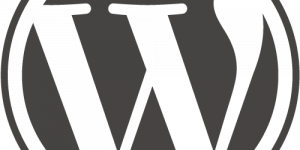
WordPress 3.8 Update – Charlie Parker
WordPress leaps forward in yet another round of UI improvements and usability tweaks. Check your plugins after you update!
Read more
WordPress leaps forward in yet another round of UI improvements and usability tweaks. Check your plugins after you update!
Read more
We all heard the buzz that WordPress was rolling out with the new 3.5 version, and now, drum roll please, Elvin is officially here! There are many things to expect with this new version, but I am here to discuss the new media gallery and how to use the updated version. Read here for how to add media in version 3.0. Adding media to your WordPress posts are essential for high quality, well designed blogs/posts and is strongly encouraged. It makes your post pleasing to the eyes, all while keeping your readers interested. This brings us back to our elementary school days where we only read books that had pictures in it, am I right? Here is an easy step by step guide to bring you up to speed with the new Elvin roll outs. WordPress Photo Gallery Galleries are photos grouped together on your post, but when your reader clicks on a photo it becomes zoomed and optimized for a closer viewing pleasure. It can easily be scrolled through like a slideshow. It is a wonderful feature if you have many photos to showcase, but do not want your blog to be cluttered. Here is a preview of how a gallery works. Click the photos to see the optimized showcase. Now, adding a gallery is simple. You would: Hit “Add Media” On the left hand side select “Create Gallery” You can then either upload new photos, or scroll through your media library. Individually select each photo you would like for your gallery showcase. You know they are selected when there is a check-mark in the upper right hand corner of the photo. Hit “Create a new gallery” once you have selected the photos you would like to use. Note: at the bottom you will see a preview of all the photos you have selected. Edit your gallery to the order, link tos, and columns of your liking. Insert your Gallery. On the editing side of your WordPress post, you will not be able to see the actual gallery formed. It will show once your post is saved/published on the preview/published page. Add Media Now I’m sure you have already noticed that even the icon button for “Add Media” looks a little different. Reason being, well, it is different. I have highlighted the “Add Media” option in yellow. The location of the button is in the same spot as it was in the past version. Drop / Upload Files In order to upload files you can either drag and drop them into this field, or you can simply hit “Select Files.” This will bring you to a dialog box where you select files on your computer you would like to upload. Media Library Once you have uploaded your photo you will notice that you are immediately brought to your media library. You are no longer brought to the editing page or where you decide how you would like to use it. The new editing field will be on your right hand side. Here you can edit the name, caption, alternative text, description, alignment, link to, and of course, size. Once you have finalized how you would like your photo to be customized, you can now chose to “Insert into Post.” Now that we have brought you up to speed on how to simply add your photo to your post, here is the fun part, adding a gallery!
Read more
Posts and pages are never as exciting without a photo or two within it. WordPress makes it easy to create pages with photos and links to documents like PDF files and spicing it up your pages will help you generate traffic to your content, leaving you satisfied with the work you put into it. At times it can even be convenient to add a file to your page so your readers may print it out at their preference, such as a PDF file. Adding Photos in WordPress When wanting to add photos to your content, you want to put your cursor where you want your photo to start. You then want to click what I have outlined in yellow for you in the photo above. That will then bring you a pop up like the one shown to the right. This offers you a few options; you can either drag and drop the photos/files, or you can get them from a URL, the gallery, or the media library. If you have not yet uploaded the photo/file you are interested in posting into your content, you will need to be sure to do so. Let’s say you need to re-use a photo you have already uploaded into your content or you need to modify your photo in any ways, the “Gallery” holds photos already within the content you are currently working on. The “Media Library” holds photos that you have already uploaded within any content (blog or post) you have published. This makes it convenient for you so you won’t have to re-upload the photo several times. If you have decided you needed to choose either Gallery or Libary, you would then find the photo you’re wanting to use and click “show” which is alongside the right of the table. You then are given the option to customize your photo to your liking. Adding a good title can help you with SEO purposes and helps you to find your photo later on when needed. Finally you want to choose insert into post or you can even use it as featured image. Adding Files Although you take the same steps to add files, it posts completely different within the content. Follow all of the same steps you would take when adding a photo, except notice once you have hit insert into post the difference. This adds a link to your page rather than an image. This generates a link that allows your viewer to download whatever document you were adding to your content. The steps are all the same, but the viewing is different. Keeping your blog interesting will help you generate the proper viewers to your content, leaving you with a refreshing feeling of accomplishment.
Read more
Driving more traffic to your Word Press page or post is very important when wanting to successfully promote your content that you have spent so much time on. The best way to do this is by installing the WordPress SEO by Yoast plug in. SEO stands for Search Engine Optimization, which helps Google, as well as other search engines, find your content quicker and easier, giving you a higher chance of getting clicks to your page. By having the Yoast plug in installed, you are able to easily customize what Google finds from your page/post and how to display it to the viewers. The Yoast plug in should display under your main content writing and should look like this (refer back to this photo throughout this post): Snippet Preview The snippet preview is displayed to show you what your link will look like when being posted to social media sites such as Facebook. When you are in the process of editing within Yoast you will see the changes display here. Focus Keyword The focus keyword is exactly as it says; it is the keyword or phrase that your content is mainly about, or focusing on. Say you are writing about fishing in the Everglades, you want to decide what kind of traffic you want to your post, so maybe you want fisherman to be directed to your page, then you could put simply “Fisherman.” Or maybe your post is focusing in on the Everglades and less on the fact that you are fishing there, then you could put “Everglades.” Or to be even more specific you can put “Fishing destination.” Filling out the keyword option helps Google find your article so if someone were to type “Fishing Destinations” Google can refer them to your page more effectively. SEO Title The SEO title is what is displayed in social media when the link is shared and also on the tab for that webpage or blog post. It is very important to have a title that is less than 70 characters and is relevant to the page topic and content. Spammy titles with repeated keywords or stuffed with keywords do not help and actually hurt both search results and click-throughs. Be sure to always write an informative and accurate title. You may find that the actual title you originally created is good enough to keep as the SEO title, so therefor you can leave this part blank. Meta Description Your meta description is the most important part of the entire Yoast plug in. Meta Description is used by Facebook WordPress plugin and by Facebook, Google Plus, and other social media sites as the post description – what ever you enter here is what will show up on the post! The Meta Description is also the little summary that shows up on search results describing the page and this is THE most influential information for getting people to click on your link, so it is important to write a GREAT description that is informative and more importantly interesting and engaging. Spammy descriptions never work and will actually reduce the click throughs you get. Meta Keywords This section is specific for search engines. The best way to come up with your meta keywords is by reading your entire article and jotting down the words that sum up your article. Such as this article we would use the keywords being Tutorial, Yoast, SEO, etc, keeping it at about a 10 word limit.
Read more
Beginning with WordPress can be challenging at first but after reading this post, you will have a clearer understanding of the basic techniques to use in order to make your page professional and interesting to your readers. First allow me to start off by saying a post and a page are two, minor, differences. A post is done in chronological order, whereas a page is a fixed and independent page. Both of which are easily done about the same way. Creating Your Title After you have decided what you want your page to be about you need to think of an interesting/catchy title for your page. Make sure you stay relevant and informative as well as keeping it as a teaser. Try not to make it “spammy” by making the title something that has nothing to do with your page just because you know readers are currently searching for the topic. Once you have racked your brain long enough and are ready to finalize your title you can type it along the top barline as shown: Once you have typed in the title that you interested in calling your page you will notice that a permalink will automatically generate underneath. If you would like, you can edit that link to whatever you would prefer. Subtitles Within your webpage setup you may be interested in making subtitles, or what WordPress calls, “Headlines.” It is used to create sub paragraphs that can be easier for your reader to spot immediately, so if they have a specific interest within your page that they are interested in, they can find it more effectively. The easier you make it for your readers, the better. Something to keep in mind is you never want to select Heading 1. Reason for that is your main title that you originally created is considered heading 1. When making your subtitles in your article you want to start with Heading 2. In order to do this you want to select from the drop-down menu Heading 2 as shown: After you have typed the heading and you have hit enter to begin your paragraph, the font will then change back to the original paragraph font. Adding Your Featured Image Your featured image is what the reader will see before clicking on to your page. It is used mainly to advertise your page in an effective way. In order to add your featured image you want to scroll on your page until you see the box shown: Proceed with clicking the “Set featured image” link. That will then take you to a new pop up screen where you can either drag and drop your photo into the dotted lines, or you can simply select the “select files” button and locate your files that way in order to upload them. Once you have done so you will be brought to a page that displays your selected image along with bringing up options to add more specifics to your featured image so your image itself can be searched giving you higher SEO. Adding Image to Page Just like adding your featured image was simple, so is adding an image to your page itself. All you need to do is click on the link located above the toolbar titled “Upload/Insert” with the little media caption (I have highlighted it in pink.) After that, you follow the same basic and easy steps you did when you added the featured image to your page. Adding Hyperlinks Let’s say within your page you want to link your readers to various pages or websites that may be helpful to them. In order to do so, type what you would like the link to be and then highlight it. Once you have done that, refer to your toolbar for the button that looks like chains being linked together. I have outlined the button in yellow in the example above. After you have clicked on that, you will get a pop up that asks for the URL and the title of the link. After you have filled everything out accordingly, you have officially created your hyperlink. When editing your page you won’t be able to click the link, but when the page is published the link is then clickable. Adding Numbers and Bullets When editing your page, you may come across some key facts that you would like to address by using either numbers or bullets so that your reader can read these facts and remember them easier. When wanting to bring this process to your page you simply click either the bullet or number button as shown: The green outline is for the bullet option and the blue outline is for the numbered option. Both of which serve basically the same purpose, it just depends on the point you are trying to make in your page.
Read more